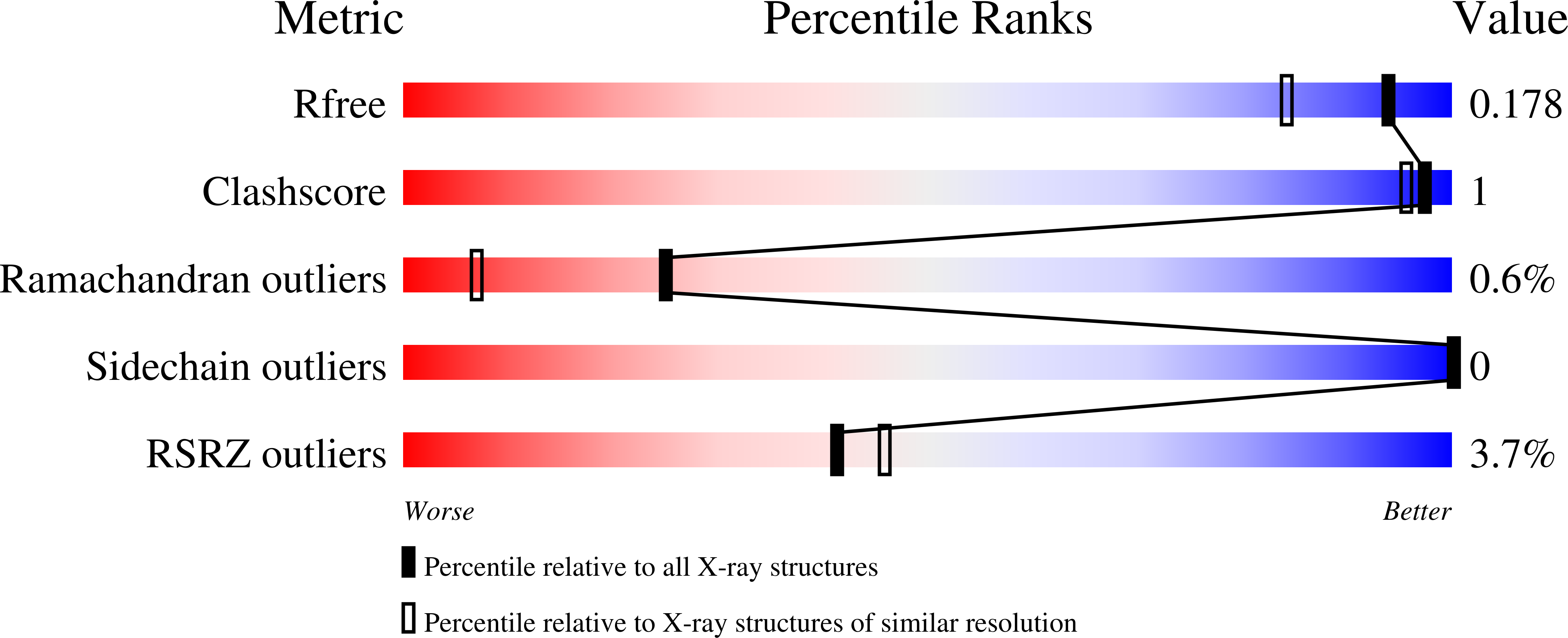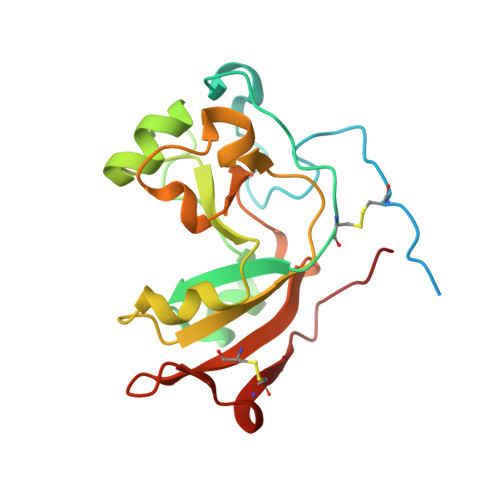Characterization of the catalytic signature of Scabin toxin, a DNA-targeting ADP-ribosyltransferase.
Lyons, B., Lugo, M.R., Carlin, S., Lidster, T., Merrill, A.R.(2018) Biochem J 475: 225-245
- PubMed: 29208763
- DOI: https://doi.org/10.1042/BCJ20170818
- Primary Citation of Related Structures:
5TLB, 5UVQ, 6APY - PubMed Abstract:
Scabin was previously identified as a novel DNA-targeting mono-ADP-ribosyltransferase (mART) toxin from the plant pathogen 87.22 strain of Streptomyces scabies Scabin is a member of the Pierisin-like subgroup of mART toxins, since it targets DNA. An in-depth characterization of both the glycohydrolase and transferase enzymatic activities of Scabin was conducted. Several protein variants were developed based on an initial Scabin·DNA molecular model. Consequently, three residues were deemed important for DNA-binding and transferase activity. Trp128 and Trp155 are important for binding the DNA substrate and participate in the reaction mechanism, whereas Tyr129 was shown to be important only for DNA binding, but was not involved in the reaction mechanism. Trp128 and Trp155 are both conserved within the Pierisin-like toxins, whereas Tyr129 is a unique substitution within the group. Scabin showed substrate specificity toward double-stranded DNA containing a single-base overhang, as a model for single-stranded nicked DNA. The crystal structure of Scabin bound to NADH - a competitive inhibitor of Scabin - was determined, providing important insights into the active-site structure and Michaelis-Menten complex of the enzyme. Based on these results, a novel DNA-binding motif is proposed for Scabin with substrate and the key residues that may participate in the Scabin·NAD(+) complex are highlighted.
Organizational Affiliation:
Department of Molecular and Cellular Biology, University of Guelph, Guelph, Ontario, Canada N1G 2W1.














